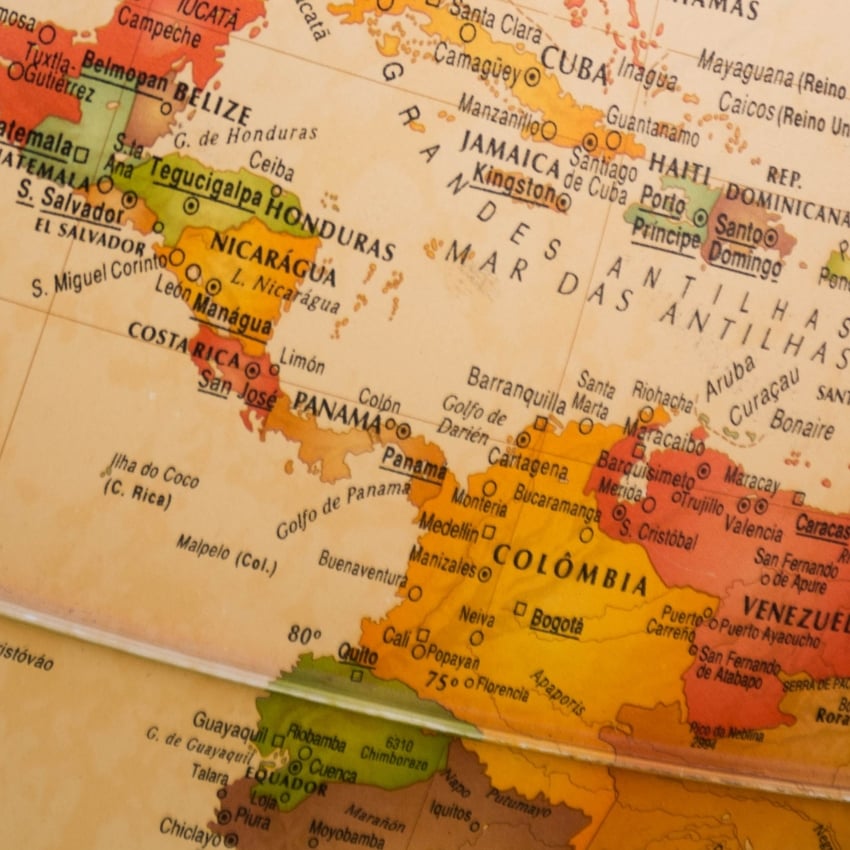In Latin America, cross-border e-commerce is growing faster than domestic sales, and is expected to reach a total of $ 95 billion by 2025.
With high vaccination levels against Covid-19 and recovering economies, Latin America is getting back on track after being hit hard by the pandemic: online cross-border sales are rising again, even faster than domestic e-commerce. And it’s just the beginning.
If domestic e-commerce rose exponentially during social isolation times, the same could not be said of cross-border e-commerce. Logistics restrictions, currency fluctuation, and the heavy restrictions due to the pandemic hindered cross-border sales in Latin America — but the scenario is changing fast.
Based upon data from BoaCompra’s Digital Renaissance in Latin America white paper, let’s take a look at the cross-border e-commerce market in the region, the impacts it suffered during the pandemic, and perspectives for the near future. Enjoy!
The 2020 cross-border sales scenario
The pandemic considerably accelerated adhesion to e-commerce: in Latin America, domestic online sales grew by 121% in 2020, reaching $ 180 billion, boosted by millions of new e-shoppers and an expansion in purchase variety and frequency.
Meanwhile, cross-border shopping remained virtually the same as in the previous year, ending 2020 with $ 29 billion volume. That is, even if more people started shopping more online, this growth did not reach foreign merchants selling to Latin America, not allowing them to go through the same major, fast development domestic online stores did.
Besides monetary matters, which led consumers to reprioritize spending and avoid more fluctuating purchases (due to currency differences), logistics also played a role in the 2020 scenario of cross-border sales. With international travel severely hindered, closed borders, and many supply chain issues, access to foreign goods was more difficult and more expensive, not to mention with longer times for delivery than usual. All of these factors turned the attention of Latin American consumers mostly to national merchants.
Post-pandemic comeback
Thankfully, the situation is fast recovering, with cross-border sales increasing day by day since 2021. And that’s not all: they are rising even faster than domestic online sales in Latin America.
In 2021, cross-border e-commerce grew by 32% in comparison to the previous year. This was led particularly by an increasing interest from consumers in merchants that offer wide product variety and competitive prices. Digital goods, such as online games, also powered the rise. Last, but not least, cross-border sales grow as more and more merchants tailor their e-stores to foreign consumers, for example, by offering local payment methods in Latam.
All verticals have a penetration of cross-border sellers, which represent around 10% of total retail volume, coming especially from categories such as clothing, accessories, and technology. When we are talking about digital goods, there are divisions driven by foreign sales: this is the case, for example, of ride-hailing apps, streaming, gaming, and SaaS.
Shopping online is definitely a habit that is here to stay: from now on, BoaCompra’s study shows that domestic e-commerce is expected to keep growing 24% per year. On the other hand, cross-border e-commerce should grow at an annual rate of 34%. That’s right — foreign sales are not only recovering, but rising faster than domestic purchases.
This will happen not only as Latin America recuperates from the pandemic, but also because of improvements in logistics, taxes, and regulation for cross-border sellers. Modern payment options also boost foreign sales, as Latam’s consumers become more and more digitized and open to innovative shopping experiences from merchants from anywhere in the world.
The result is that, by 2025, cross-border sales in Latin America will sum up $ 95 billion.
A look into major Latin American cross-border markets
Many e-commerce trends reach the entire region of Latin America, such as increasing digitization and the importance of local payment methods. However, when it comes to cross-border sales, each country has its tradition.
When merchants first start developing a strategy to sell to Latam, usually the first targets are Mexico and Brazil, the two countries with the biggest cross-border sales volume — $ 11.5 billion and $ 8.6 billion, respectively. Mexico, as we’ll explain more below, is especially open to foreign merchants due to its close proximity to the United States.
Another characteristic in both countries is that they are being highly sought after by Chinese retailers and marketplaces, which have been finding great success among Mexican and Brazilian consumers. These two audiences share a keenness for competitive prices and wide product variety, even if that comes alongside long shipping prices and poor UX. Thus, such foreign companies are able to compete with domestic, well-established players.
Among the main markets of Latin America, the only one with virtually no cross-border e-commerce penetration is Argentina, where 97% of total online sales volume comes from domestic merchants. This is because of the country’s strict regulations and taxation on cross-border transactions, so it’s even more interesting for foreign companies to count on local partners when selling to the country.
Due to both geographical and economical differences, the scenario in the most important Latam markets for cross-border merchants are detailed below:
Mexico
Mexico is the second biggest overall e-commerce market in Latam, but #1 when it comes to cross-border sales. Since it borders the USA, the country is very used to shopping from abroad, representing a major opportunity for merchants from anywhere in the world.
Cross-border e-commerce represented 24% of all online sales in 2021, expected to rise to 31% by 2025. The biggest volume comes from ride-hailing and delivery apps, digital goods and services, and other services — the 3 sectors have, each, a 47% rate of cross-border purchases.
Meanwhile, cross-border travel sales represent 27% of total travel volume; in retail, 13% comes from cross-border sales. Thus, although foreign sales are already well established in Mexico, there’s still plenty of space for new merchants to tap into.
Brazil
Cross-border e-commerce is rising in Latin America’s most important market, which represents extraordinary opportunities for merchants.
Nowadays accounting for 6% of all online sales in the country, cross-border e-commerce is expected to reach 7% by 2025. The main segments with foreign sales penetration are travel (8%), retail (6%), and apps for ride-hailing and delivery (5%).
It’s worth noting that the travel sector, which suffered tremendously with the pandemic, is one of the e-commerce markets that is changing the most right now. Since it has the highest rate of cross-border purchases in Brazil, the country is an interesting option for travel companies to dive into.
Peru
Peru’s e-commerce rise is phenomenal: it grew 91% between 2020 and 2021 — the fastest rising e-commerce market in Latin America. And there’s plenty of room for even more growth: online sales still only reach 50% of the population, and total volume is expected to have a 21% annual increase up to 2025.
Many sectors in the country prosper in cross-border sales: delivery and ride-hailing apps, digital goods and services, and other services all have a 35% share of cross-border sales. In travel, 29% of sales volume comes from cross-border, and 11% in retail. Considering total online sales, cross-border sales represent 21%.
Chile
This is definitely another one of the most exciting Latam markets right now. With a fast rising volume of sales both in cross-border and in domestic e-commerce, Chile has the highest sales volume per capita in the whole of Latin America — proving that the region’s smallest populations should not be left aside by merchants.
In 2021, 21% of all e-commerce sales were cross-border; by 2025, it should rise to 26%. Here, travel is also the segment with the highest cross-border volume (25%), while several other markets have a 20% rate of cross-border: retail; ride-hailing and delivery; digital goods and services; and other services.
Colombia
Colombia’s e-commerce market, both domestic and cross-border, is still in development — and rising fast. While the country summed up $ 21 billion in 2021 e-commerce sales, the amount should grow to $ 45 billion by 2025.
With a 51% e-commerce penetration rate, online sales grow 24% per year in Colombia. Merchants, then, should not miss on the chance of reaching this market full of potential.
Cross-border sales currently represent 17% of total e-commerce, with a high penetration especially in the segments of ride-hailing and delivery; digital goods and services; and other services — cross-border sales account for 21% of total volume in each.
As we’ve shown in this article, Latin American consumers are open and willing to buy from cross-border merchants that offer the experience they expected, from product variety to payment options.
Local payment methods play a fundamental role in the success of foreign merchants in the region, so click below to talk to us and understand how BoaCompra by PagSeguro’s Payment Processing Solution can help you boost sales in this fast-rising market:





